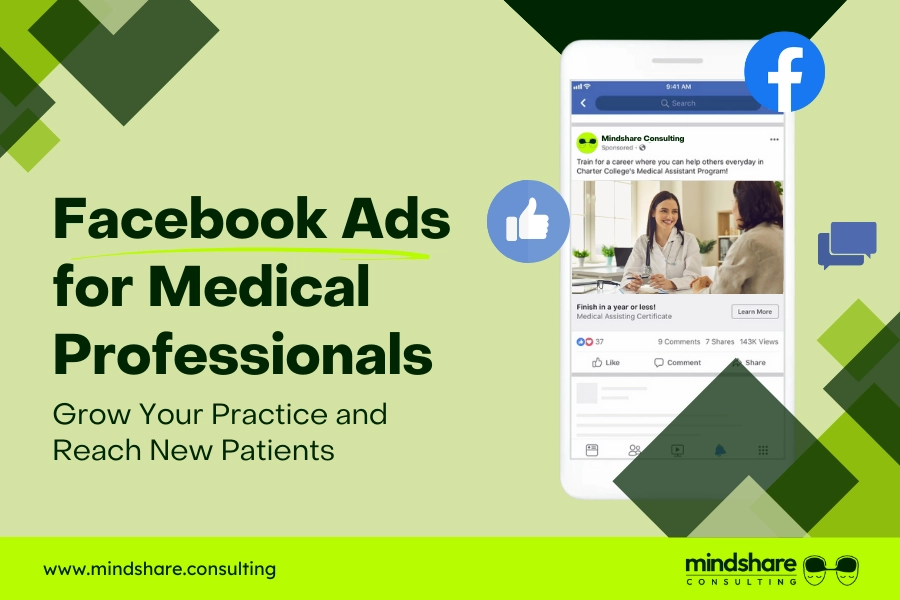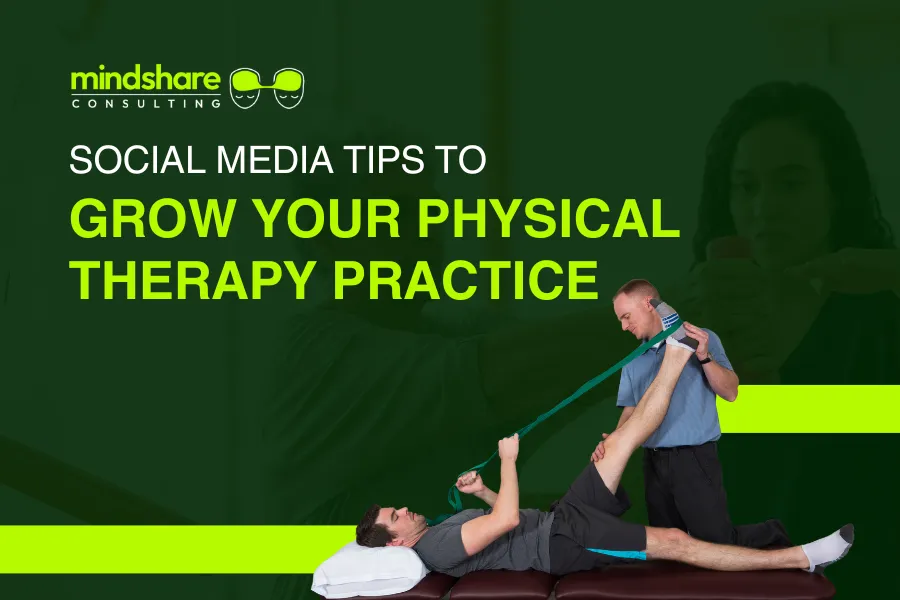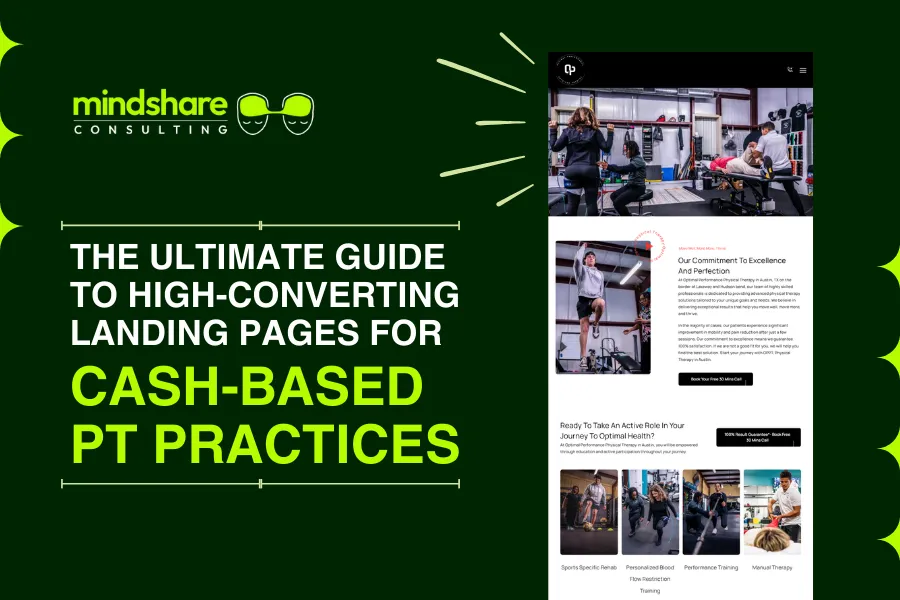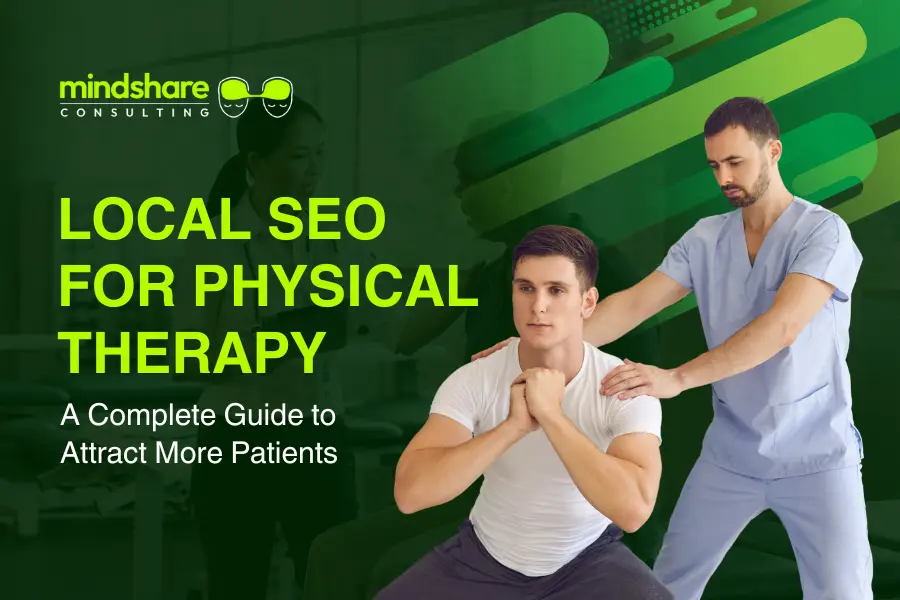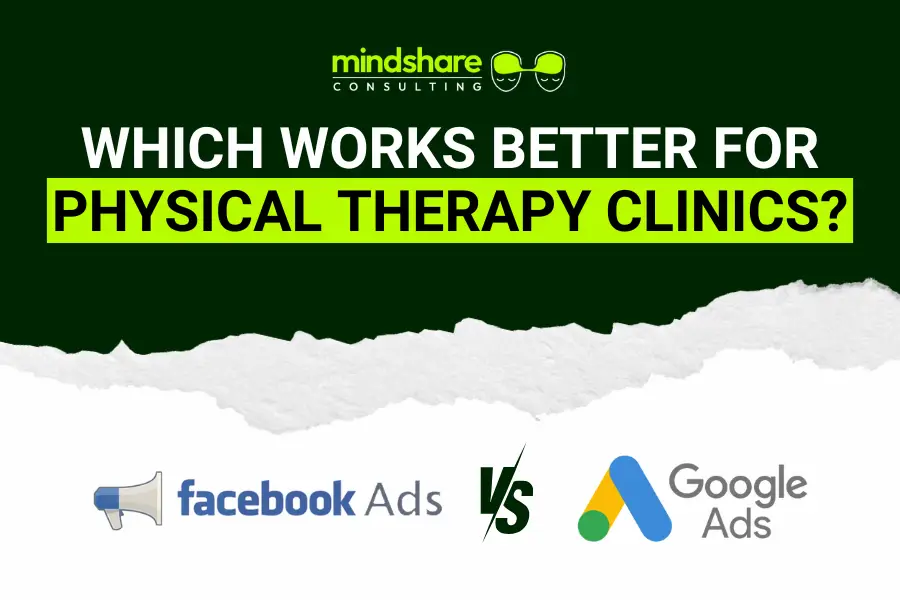Are you a plastic surgeon, dermatologist, dentist, or own a medspa or aesthetic clinic?
If so, you’re likely wondering: “Should I invest in Facebook ads?” “Will they help me attract more patients?” or “Facebook vs. Google Ads: Which is better?”
This post will answer these questions and show you how to leverage Facebook Ads to grow your practice significantly. We’ll also discuss a strategy to increase conversions and ensure your online ads are successful.
Remember, when advertising on Facebook, you’re reaching people who are casually browsing, not actively searching for medical services. Therefore, your ads must be visually appealing, engaging, and informative. Use high-quality images or videos, compelling copy, and a clear call to action.
Facebook has become a powerful platform for generating leads and even conversions. Using the right messaging can convert this audience into potential patients.
Why Invest in Facebook Ads?
Here are some compelling reasons to consider Facebook Ads for your medical practice:
- Faster Practice Growth
- Increased Brand Awareness
- Targeted Service and Offer Promotion
- Website Traffic Boost
- Revenue Growth
- Reaching More People with Your Services
The Key to Successful Facebook Ads: Targeting
The most important element of a Facebook Ad is targeting the right audience. Facebook offers advanced targeting options that allow you to reach potential patients based on demographics (age, gender, location), interests, behaviors, mobile devices, job titles, and more.
Example:
Let’s say you have a Hair Growth Clinic in New Jersey and want to run an ad for hair loss treatment for men. Your target audience would have the following characteristics:
- Age: 21-45 years old
- Gender: Male
- Location: New Jersey
- Interests: Management of hair loss (people who have shown interest in or like pages related to hair loss)
- Behavior: Based on your experience with similar patients
Now, let’s explore the different types of ad campaigns on Facebook that you can utilize for your medical practice.
How Does Facebook Marketing Work for Doctors?
Facebook marketing for doctors helps healthcare practitioners expand their reach by sharing information about their practices on the platform. This strategy is beneficial for both new and established doctors.
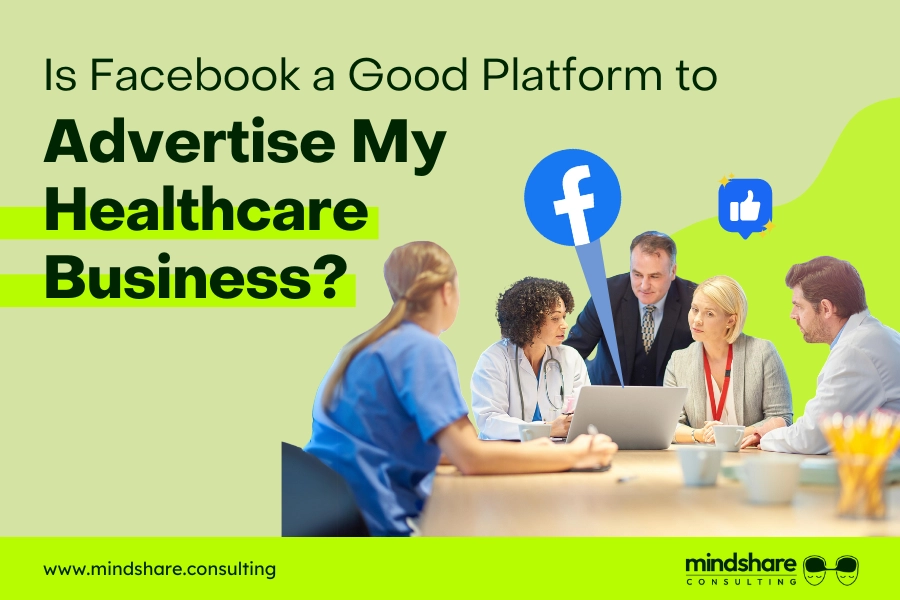
There are several ways to promote your services on Facebook, including creating ads and posting updates about your clinic.
Have you ever noticed ads on your newsfeed that seem related to recent conversations? These are part of Facebook’s targeted marketing approach.
When doctors use Facebook marketing, they can attract the attention of both new and existing patients. Well-crafted posts and ads can lead to increased patient visits.
Research involving over 4,000 healthcare specialists found that more than 65% use social media for professional purposes. Social media is user-friendly and allows quick message dissemination.
Maximizing Facebook Ads for Your Medical Practice
Facebook offers a wealth of user interests and behaviors data, making it an invaluable tool for healthcare advertising.
Unlike traditional mediums such as television or radio, which often struggle to reach the ideal audience, Facebook consistently delivers impressive results for medical advertisers.
A robust social media strategy is essential for any medical office’s marketing plan. While various platforms are available, Facebook is the most effective for engaging patients.
Facebook ads offer a highly personal and effective way to connect with your audience and attract local patients to medical and dental practices. However, many practices make costly mistakes that reduce ad effectiveness or increase conversion costs.
To enhance your practice’s Facebook presence and attract new patients, consider these tips from the medical marketing experts at Mindshare Consulting.
Getting Started with Facebook Ads Manager
Before diving into Ads Manager, ensure you have a Facebook business page. An Ads Manager account is automatically created when you set up your page. You can create a business page later if you don’t have a business page.
Here are three ways to access your Facebook Ads Manager account:
- Use this link to go directly to your Ads Manager account (bookmark it for easy access!).
- Click the “Ad Center” drop-down arrow on any Facebook page’s left sidebar, select “All Ads”, and then click on “Ads Manager” at the bottom.
- Use the Facebook Ads Manager mobile app to manage your ad campaigns anytime, anywhere.
You’ll see the ad account setup when you first open Ads Manager. Facebook assigns a random account ID and sets your currency and time zone based on location. These settings can be changed if necessary, such as if you relocate your practice or create your account while traveling.
To change these options, use the Settings menu in the upper right-hand corner.
For first-time users, Ads Manager might seem overwhelming. The main screen has three tabs:
- Campaigns: This tab contains all your campaign assets.
- Ad Sets: Each ad set targets a specific audience with distinct characteristics.
- Ads: Your individual ads are located within ad sets.
As you explore Ads Manager, you’ll find various data and tools at your disposal.
Now that we have covered the basics of Ads Manager, let’s move on to creating your first campaign!
Setting Up a Facebook Ad Campaign
To start creating a campaign in Facebook Ads Manager, go to the “Campaigns” tab and click on the green “+Create” button. If you’re using the mobile app, select “Create Ad” at the bottom of the screen.

Once you initiate the campaign creation, you will see the following screen:
Step 1: Select Your Campaign Objective
Facebook provides 11 marketing objectives that align with specific business goals, allowing you to tailor your ads to achieve specific outcomes.
- Brand awareness: Introduce your brand to a new audience.
- Reach: Expose your ad to as many people as possible.
- Traffic: Direct users to a specific webpage, app, or Facebook Messenger conversation.
- Engagement: Increase post engagements, Page Likes, event attendance, or special offer claims.
- App installs: Encourage people to download your app.
- Video views: Boost video views.
- Lead generation: Gather new leads.
- Messages: Prompt users to contact your business via Facebook Messenger.
- Conversions: Drive specific actions on your website, app, or Messenger.
- Catalog sales: Link your ads to your product catalog to show relevant products.
- Store traffic: Attract nearby customers to your physical store.
Choosing the right objective is crucial as it influences your campaign’s ad formats, bidding options, and optimization strategies.
Step 2: Name Your Ad Campaign
After selecting your campaign objective, name your campaign. A clear naming pattern, including the start date or date range, helps you effectively organize and analyze your campaigns. For instance, a campaign named “Page Likes – 20241201” indicates it’s for Page Likes starting on December 1, 2024.
You can create a split test (A/B test) or optimize your budget on this screen. Split tests allow you to experiment with different creatives, placements, audiences, and delivery strategies to identify the most effective approach.
Step 3: Set Up Your Campaign Budget and Bidding
Decide how much you want to spend on your ad. You can set a budget as either Daily (the average amount spent each day) or Lifetime (the maximum amount spent during the campaign’s duration).
Next, choose your bid strategy: Lowest Cost, Cost Cap, or Bid Cap. Your choice will significantly impact your spending and campaign efficiency. Experiment with different strategies and review your data monthly to determine the most cost-effective approach.
Step 4: Set Up Audience Targeting
You have two options for audience targeting:
- Create a New Audience
- Use a Saved Audience
You can target audiences based on demographics, interests, behaviors, etc. Stack these options to refine your target audience. Facebook will show your estimated daily reach and indicate your appropriate audience size.
Remember to comply with HIPAA privacy and security regulations and other relevant laws in your Facebook marketing campaigns.
Step 5: Set Up Ad Placement
Ad placement determines where your ad will appear. By default, Facebook selects “automatic placements” optimized for the best results. You can choose “manual placements” to specify where your ads will appear, such as Facebook’s mobile News Feed, desktop News Feed, or right column.
Step 6: Create Your Ad Creative
The ad creative is what users will see. You can either use an existing Facebook Page post image or create a new one. Follow these guidelines for single-image ads:
- Text: 125 characters
- Headline: 25 characters
- Image ratio: 1.91:1
- Image resolution: 1080 x 1080 pixels
For Carousel Ads (multi-image ads):
- Image size: 1080 x 1080 pixels
- Image ratio: 1:1
- Text: 125 characters
- Headline: 40 characters
- Link description: 20 characters
Ensure your images contain no more than 20% text for optimal performance.
After completing these steps, publish your campaign and monitor its performance. Use the Account Overview in Ads Manager to get insights on campaign performance and demographic information, which will help you refine future campaigns.
Top Strategies for Effective Facebook Marketing
Effective Facebook marketing strategies include creating engaging content tailored to your audience, utilizing Facebook Ads for targeted reach, leveraging Facebook Insights for data-driven decisions, and actively engaging with your audience through comments and messages. Consistent posting and utilizing features like Stories and Live videos can further boost visibility and engagement.
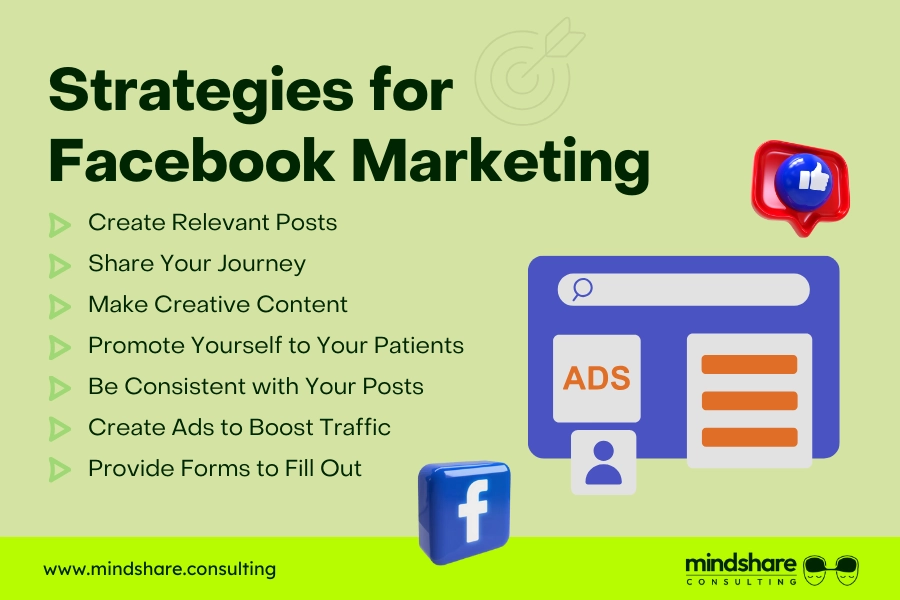
1. Create Relevant Posts
Stay updated on current trends and create posts that discuss relevant medical topics. Posting videos can help reach a broader audience as videos are more likely to appear on someone’s Facebook watch list. If you prefer written posts, make them detailed yet concise, avoiding excessive medical jargon.
2. Share Your Journey
Share stories from your practice to make yourself relatable. Discuss patient cases (with consent) and the symptoms they presented, helping others recognize if they might need your services. Posting about your staff and their specialties can also attract more visitors to your page. Additionally, sharing patient reviews can build trust and credibility.
3. Make Creative Content
Infuse creativity into your posts. Use humor or educational “Did you know?” posts to engage your audience. Create interactive content like quizzes, offering discounts for correct answers to encourage participation. Respond to questions on your page or through Facebook Live to enhance interaction.
4. Promote Yourself to Your Patients
Promote your Facebook page through various channels. Mention your page on clinic fliers, business cards, and your website. Use a QR code on your business card for easy access. Announce Facebook Live sessions on other social media platforms and ask colleagues to promote your page.
5. Be Consistent with Your Posts
Consistency is key! Regularly update your page with new posts, reviews, or memes to keep your audience engaged. If maintaining consistency is challenging, consider hiring an assistant or using online marketing tools to manage your social media presence.
6. Create Ads to Boost Traffic
Facebook ads are a reliable way to attract potential patients. Various ad formats include:
- Video Ads: Promotional videos should be short (under 15 seconds), use voice-overs, and avoid too much text.
- Picture Ads: Use eye-catching images with brief, informative text. Keep titles under 25 characters and body text under 125 characters.
- Carousel Ads: Combine multiple images or videos in one ad, simultaneously allowing you to showcase different services.
- Slideshow Ads: Create a slideshow from up to seven images to present information dynamically.
When it comes to privacy regulations, targeting specific illnesses for advertising purposes is prohibited. However, it’s permissible to target ads based on demographic information such as age, gender, and location. This allows for effective outreach to potential patients in close proximity to your medical facility.
7. Provide Forms to Fill Out
Once your ads are created, it’s important to direct them to a landing page or your website where patients can easily schedule appointments. Consider using digital forms such as Google Forms to streamline the collection of patient information and manage responses in an efficient manner.
Final Thoughts
Time For You To Get Started! Combining social media with healthcare can be challenging, but it also presents incredible opportunities.
Facebook offers medical practices a simple, cost-effective, and impactful way to establish authority, provide patient and customer support, and use targeted ads to reach the ideal patient at the right time with the perfect message. It is ideal for highlighting patient and practice successes, creating connections, and building trust with potential patients.
Now it’s time to make your Facebook ads stand out! Digital marketing is growing exponentially over the past few years. To maximize the effectiveness of your Facebook ads, you must find a way to make them stand out from the rest. Doing what everyone else is doing might not yield the best results.
Start crafting your unique Facebook ads today! If managing this alone feels overwhelming, consider partnering with a healthcare marketing agency like Mindshare Consulting.
Facebook is a powerful platform for patient acquisition. We are confident that by following the tips provided here, you will make the most of your targeting options, reach warm audiences, and advertise in a way that sets you apart from other healthcare practitioners.
We’d love to hear from you! What is your top Facebook ad strategy? Share it with us in the comments section below.
Visit our website to learn more about our services!

